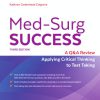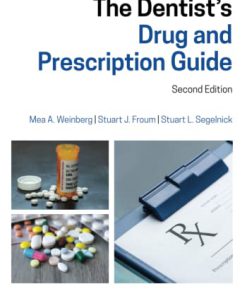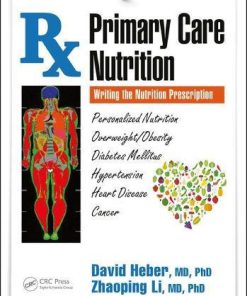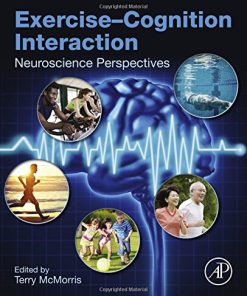Therapeutic Exercise Prescription 1st Edition by Kim Dunleavy, Amy Kubo Slowik ISBN 0323613454 9780323613453
$50.00 Original price was: $50.00.$25.00Current price is: $25.00.
Therapeutic Exercise Prescription 1st Edition by Kim Dunleavy, Amy Kubo Slowik – Ebook PDF Instant Download/Delivery: 0323613454, 978- 0323613453
Full download Therapeutic Exercise Prescription 1st Edition after payment

Product details:
ISBN 10: 0323613454
ISBN 13: 978-0323613453
Author: Kim Dunleavy, Amy Kubo Slowik
Dunleavy and Slowik’s Therapeutic Exercise Prescription delivers on everything you need from a core therapeutic exercise text. This all-new, full-color text combines evidence-based content, theoretical concepts, AND practical application to provide a robust understanding of therapeutic exercise. Using an approachable, easy-to-follow writing style, it introduces foundational concepts, discusses how to choose the right exercises, and guides you in developing goals for treatment. Coverage also includes the examination process and specific ways to choose, monitor, and evaluate the most effective exercise. Each exercise in the text is presented with progressions ― a unique feature that’s exclusive to this title ― to give you an understanding of how the exercise(s) may change from the initial phase of exercise prescription to the functional recovery stage. In addition to its highly-digestible format, this text also boasts case studies, practical discussions, and engaging online videos to provide you with the most dynamic and effective learning experience.
- UNIQUE! Clinical reasoning approach to exercise selection, modification, instruction, and progression provides a framework to help you master all aspects of therapeutic exercise, from the initial exercise prescription to the functional recovery stage.
- Emphasis on patient safety and precautions includes the use of the ICF model, as well as coverage of tissue healing and biometrics.
- UNIQUE! Clinical case examples provide practical examples in a succinct compare and contrast format to help you build clinical reasoning skills and learn to apply theory to practice.
- Full case studies cover all the regions of the body as well as each of the mobility-, trauma-, and psychologically-informed concepts.
- Discussion questions and answers at the end of each case study and at the end each chapter help you assimilate and use your existing knowledge and help prepare you for the types of critical thinking you will be required to do in practice.
- UNIQUE! Integrated content builds from foundational concepts, with reinforcement throughout the book using illustrations and explanations of important concepts.
- UNIQUE! Discussion of broad categories,such as extremes of mobility impairments, types of trauma, and presence of psychological impairments, strengthen your understanding.
- UNIQUE! Detailed exercise depictions include teaching tips with instruction examples, common errors to correct, and methods to prevent or address compensations.
- UNIQUE! Workbook format features comprehensive coverage of exercise examples with alternatives and progressions.
Therapeutic Exercise Prescription 1st Table of contents:
Part I: Foundations for Therapeutic Exercise Prescription
Introduction
- Overview of therapeutic exercise for rehabilitation, including its role, patient management, and exercise types.
1. Introduction to Therapeutic Exercise for Rehabilitation
- Use of Therapeutic Exercise for Rehabilitation: Explanation of how exercise is integral in rehabilitation.
- Patient Management Model: Overview of the model used for effective patient care and management.
- Contraindications and Precautions: Identifying scenarios where exercise might harm or be inappropriate.
- Severity, Irritability, Nature, Stage: Key factors in assessing a patient’s condition.
- Types of Exercise: Categorization of exercises used in rehabilitation.
- Types of Muscle Contraction: Exploring concentric, eccentric, and isometric contractions.
- Summary: A brief recap of key concepts discussed.
2. Review of Foundational Concepts
- Tissue Damage: Traumatic vs. Repetitive Strain Injuries: Understanding the differences between acute and chronic injuries.
- Ability to Withstand Forces (Stress-Strain Relationships): Tissue responses to mechanical forces.
- Tissue Repair and Factors for Promoting Optimal Recovery: Insights into healing processes and recovery.
- Factors Influencing Healing: The impact of force considerations on tissue characteristics.
- Biomechanical Concepts to Apply or Minimize Forces: Methods to handle and distribute forces during exercise.
- Balance Concepts: Static and Dynamic Balance: The importance of balance in rehabilitation.
- Directions and Planes of Movement: Basic anatomy principles for movement assessment.
- Summary: Recap of the biomechanical and healing principles.
3. Relationship Between Impairments and Function
- Function: The Key for Establishing Goals During Patient Management: Importance of function in determining rehabilitation goals.
- Impairments: Identifying functional impairments and their impact on rehabilitation.
- Relationship Between Impairments and Function: How impairments influence functional outcomes.
- Summary: Conclusion on the connection between impairments and function.
4. Examination Techniques and Evaluation
- Subjective History and Examination: Role of history and initial examination in decision-making.
- Selective Tissue Tension Evaluation: A technique for determining the integrity of tissues.
- Alignment and Movement Observation: Observing posture and movement for signs of impairments.
- Specific Exercise Testing: Tailored exercises to assess specific physical functions.
- Functional Assessment: Comprehensive assessment of a patient’s functional capacity.
- Summary: Key points on how to evaluate and examine patients.
5. Exercise Prescription: Selection of Exercise Type and Parameters
- Exercise Prescription: Selecting Exercise Type and Parameters: Guidelines for choosing the right exercises based on the patient’s needs.
- Prescription for Mobility Impairments: Exercises aimed at improving joint mobility.
- Prescription for Muscle Function Impairments: Focus on exercises to improve muscle strength.
- Prescription for Neuromuscular Coordination: Exercises designed to improve coordination and control.
- Other Parameters Useful for Mobility, Muscle Function, and Neuromuscular Coordination Exercise: Additional factors to consider for effective exercise prescription.
- Priorities and Progression: Adapting exercise as the patient’s condition evolves.
- Summary: Final overview of exercise prescription.
6. Mobility, Trauma, and Psychologically Informed Concepts for Exercise
- Concepts to Assist with Choice of Type of Exercise and Parameters: Guidelines for selecting exercises based on patient needs.
- Hypomobility and Hypermobility: Exercises for both stiff and overly flexible joints.
- Repetitive Strain Disorders: Addressing issues arising from overuse.
- Postsurgical Management: Approaches for rehabilitation post-surgery.
- Exercise Approaches in the Presence of Psychological Impairments: Adjusting exercise based on psychological conditions.
- Use of the Conceptual Categories: Utilizing classifications of mobility and trauma for optimal exercise planning.
- Summary: Recap of exercise selection concepts.
7. Teaching and Learning Concepts for Exercise
- Teaching and Learning Concepts for Exercise Instruction: Methods for effectively instructing patients.
- Motor Control Concepts: Understanding how the brain controls movement and motor skills.
- Initial Explanations and Goal Setting: Strategies for explaining exercises and setting patient goals.
- Acquisition of Motor Tasks: The process through which patients learn motor skills.
- Error Detection and Feedback/Feedforward Mechanisms for Motor Performance: Techniques for improving movement accuracy.
- Sequencing, Practice, and Reinforcement: How to structure exercise programs for optimal learning.
- Motor Learning and Control in the Presence of Pain: Adapting exercises to minimize pain during learning.
- Patient-Centered Approaches: Tailoring exercises to patient expectations and preferences.
- Evaluation of Learning: Modifying teaching methods based on patient progress.
- Using Moderate Intensity Exercise to Promote Neuromuscular Coordination and Motor Learning: Importance of intensity in promoting motor learning.
- Summary: Key takeaways for effective teaching and learning.
8. Evaluation for Adjustment of Exercise and Outcomes
- Evaluation of Response to Exercise: Methods for assessing patient progress.
- Evaluating Compensations and Movement Patterns: Identifying and addressing compensatory movement patterns.
- Evaluation for Choice of Home Program Exercise Prescription: Deciding on exercises for patients to do at home.
- Outcome Measures: Methods for measuring rehabilitation success.
- Summary: Conclusion on the importance of ongoing evaluation.
Part II: Therapeutic Exercise Prescription Workbook
This section includes detailed workbooks for various therapeutic exercises for different body regions:
9. Lower Extremity Workbook
- Structural and Biomechanical Considerations: Addressing issues specific to the lower extremity.
- Sections:
- 9.1 Hypomobility: Exercises for limited joint mobility.
- 9.2 Hypermobility: Exercises for overly flexible joints.
- 9.3 Repetitive Strain: Exercises to address overuse injuries like patellofemoral syndrome.
- 9.4 Postsurgical Management: Exercises for patients post-total knee replacement.
10. Upper Extremity Workbook
- Biomechanical Concepts: Specific to upper extremity movement and function.
- Sections:
- 10.1 Hypomobility: Exercises for stiffness in the upper limbs.
- 10.2 Hypermobility: Exercises for hypermobile shoulder joints.
- 10.3 Repetitive Strain: Exercises for shoulder impingement or similar injuries.
- 10.4 Postsurgical Management: Post-surgical rehabilitation, e.g., for rotator cuff repairs.
11. Spine Workbook
- Biomechanical Concepts: Addressing issues related to spinal mobility and stability.
- Sections:
- 11.1 Hypomobility: Exercises for improving spinal mobility.
- 11.2 Hypermobility: Exercises to strengthen and stabilize the spine.
- 11.3 Repetitive Strain and Postural Syndromes: Exercises for conditions like spondylolysis or postural problems.
- 11.4 Postsurgical Management: Post-surgical rehabilitation, e.g., after pelvis fractures.
People also search for Therapeutic Exercise Prescription 1st:
therapeutic exercise prescription 1st edition
what is considered therapeutic exercise
types of exercise prescription
physical therapy exercise prescription
a therapeutically equivalent drug is
Tags:
Kim Dunleavy,Amy Kubo Slowik,Therapeutic,Exercise,Prescription 1st
You may also like…
Medicine - Dentistry
Romance - Paranormal Romance
Psychology - Psychotherapy
Emotional Communication and Therapeutic Change 1st Edition by Wilma 1000326241 9781000326246
Children's Books - Arts
Drawing Class Animals 1st Edition by Heegyum Kim ISBN 0760379335 9780760379332
Business & Economics - Management & Leadership
CHANGE RX FOR HEALTHCARE your prescription for leading change 1st Edition Killpack












